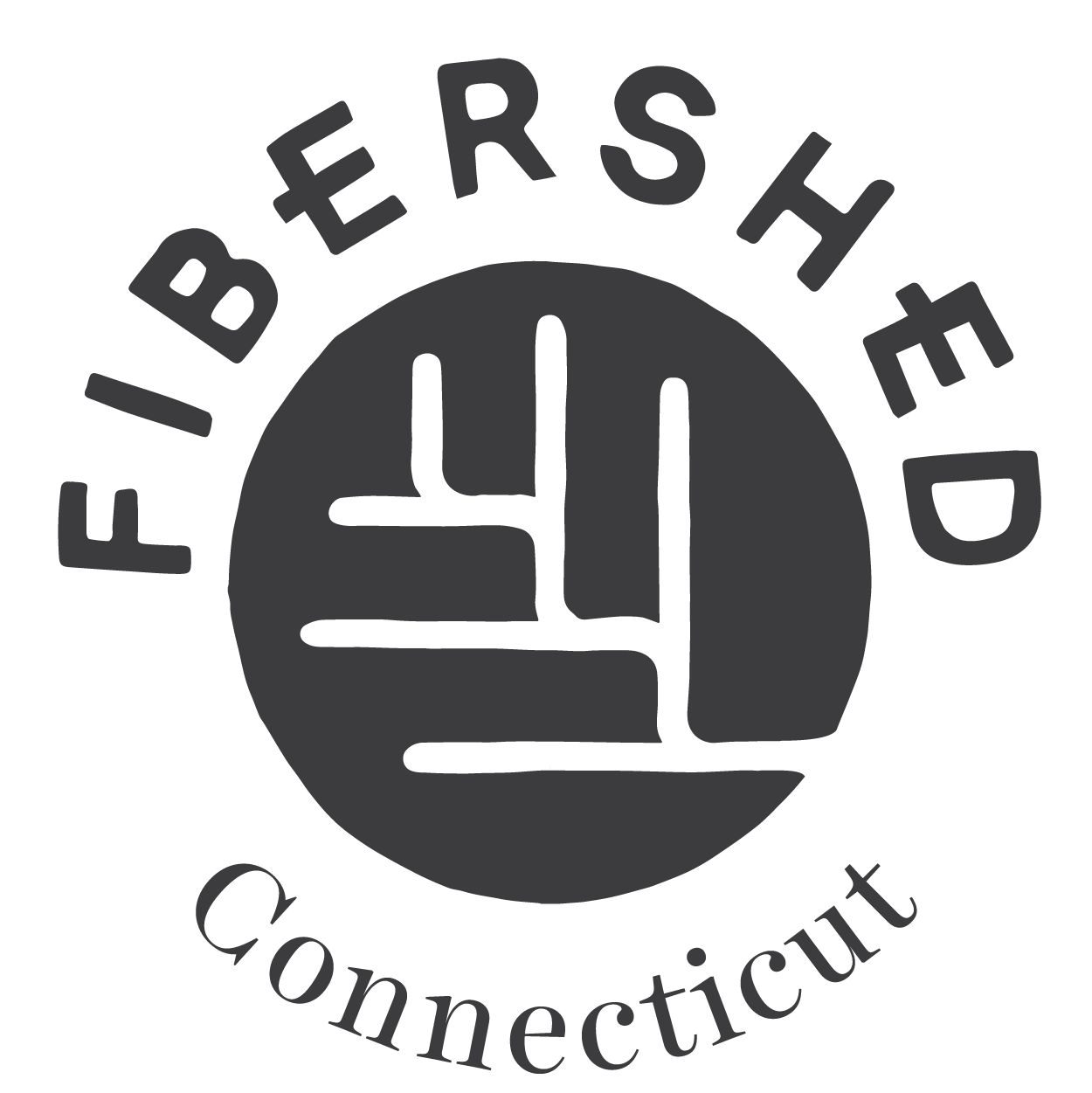Musings of a Fiber Farmer
While the world around me has been complaining and suffering through quarantine, I’ve been fairly quiet. At the start of the new year, I was craving a “year off”. I wanted to cancel everything that I had committed to this spring and summer to focus on my fiber. I wanted more time to improve my spinning, spend time with my animals, and experiment with natural dyes. I wanted to practice sewing and learn the Sashiko method of visible mending. I wanted a serious break from all the people-ing to stay home and do my crafts all day every day. While the events on my calendar were things I truly enjoy doing, I just didn’t feel like I had the energy for them this year. By mid-March, my wish for a “year off ” was granted.
It didn’t feel that way at first, however. It felt scary and uncomfortable. I spent the first few days of quarantine needle felting because, let’s be honest, stabbing is a great stress reliever. After the initial shock wore off, I began to see the quarantine in a new light, a brighter light. I started to see it as a gift. I was suddenly given endless amounts of time and relieved of all commitments. 2020 became the “year off” that I wanted to study fiber arts. I grew increasingly grateful for it. I’m also grateful for the fact that after I shifted my mindset, I had very few other adjustments to make in quarantine. My husband continues to work from home. I continue to work our farm. We rarely go out to stores and restaurants. We don’t have any children at home with whom to navigate online schooling. Life carried on as usual, so aside from being nervous for the health of the world, things remained status quo on our little farm.
But as April came to an end, I was longing for a fiber festival. The Connecticut Sheep, Wool, and Fiber Festival was cancelled and while I do look forward to seeing all my local fiber friends, it was the Maryland Sheep and Wool Festival that I was most looking forward to this spring. I’ve never been to the Maryland fiber event and this year I had decided that I’d fly down on Friday, my birthday, and spend the weekend playing with fiber and exploring D.C. In my mind, it was the perfect birthday weekend.
When these plans were cancelled, I admittedly pouted. During my pity party I thought of all the fiber festivals I wouldn’t get to attend this year. The New Hampshire Sheep and Wool Festival was cancelled in May as well as the Maine Fiber Frolic in June. When your life revolves around fiber and fiber animals, as mine does, these events are a big deal. They are like a professional conference combined with an inspiring creative retreat. Festivals give me the opportunity to attend lectures, take classes, connect with other sheep farmers, browse yarns, discover other fiber crafts, shop for wool, and ultimately be surrounded by my people. I was devastated that none of this would be happening this year. I had been feeling uninspired in my own fiber art. I was spinning a lot, but felt unenthusiastic about the yarns I was creating. My pile of knitting WIPs (works in progress) was growing because my weekly knitting circle was no longer gathering and I was stuck on each of my knitting projects. I needed my mentors to help me undo my mistakes.
Then one day while scrolling through sheep posts on Facebook, a woman named Clare Harrison commented on the CT Sheep Farmers page that she had a fiber mill at Windover Farm. I immediately looked her up. I like to think I keep close tabs on all the fiber happenings in our little state and somehow this mill snuck past me. I was well aware of Still River, Twist of Fate, and Six Paca Farm. How could I have not heard of Clare’s mill? With a little social media snooping, the answer became clear. Her mill was brand-y new!
I immediately sent Clare a message. I had accumulated an impressive stash of mohair over the last three shearing seasons. I wanted to have some of it processed in a mill but was paralyzed with indecision, having never used a mill before. I hoped that maybe a new mill owner would empathize and be patient while I worked out the details of how I wanted my fiber processed. After a few texts back and forth, it was decided that I would drive my mohair across the state of Connecticut to Clare’s mill in Newtown.

When I arrived at Windover Farm, Clare gave me the warmest welcome one could possibly receive from six feet away. I knew instantly that I had made the right decision about bringing my fiber to her mill. She helped me carry my bags of mohair into the mill. While I was in the bathroom, she tore into the bags and was ooohing and ahhhing over my fiber when I came out. To a fiber farmer who works alone day in and day out, this type of validation doesn’t come along too often.
As we sorted through the fiber together, I asked Clare how she had come into shepherding and starting a fiber mill. Assuming that she had a long history of knitting and working with wool, I laughed when she told me she started a farm to lower her property taxes. She had never knit anything in her life! I can think of a dozen other ways to farm without taking on a project of this magnitude, but Clare and her husband entered into the business of fiber farming with gumption.
Clare graciously gave me a tour of her little mill showing me every machine and explaining the process of milling raw fiber into skeins of yarn.
Before it is even washed, fiber is put into the tumbler so that vegetable matter, second cuts, and dirt fall out to the floor.

Fiber then moves to the washing machine, which is divided into three separate sections.

After being washed, fiber is laid out to dry on mesh bottom racks.
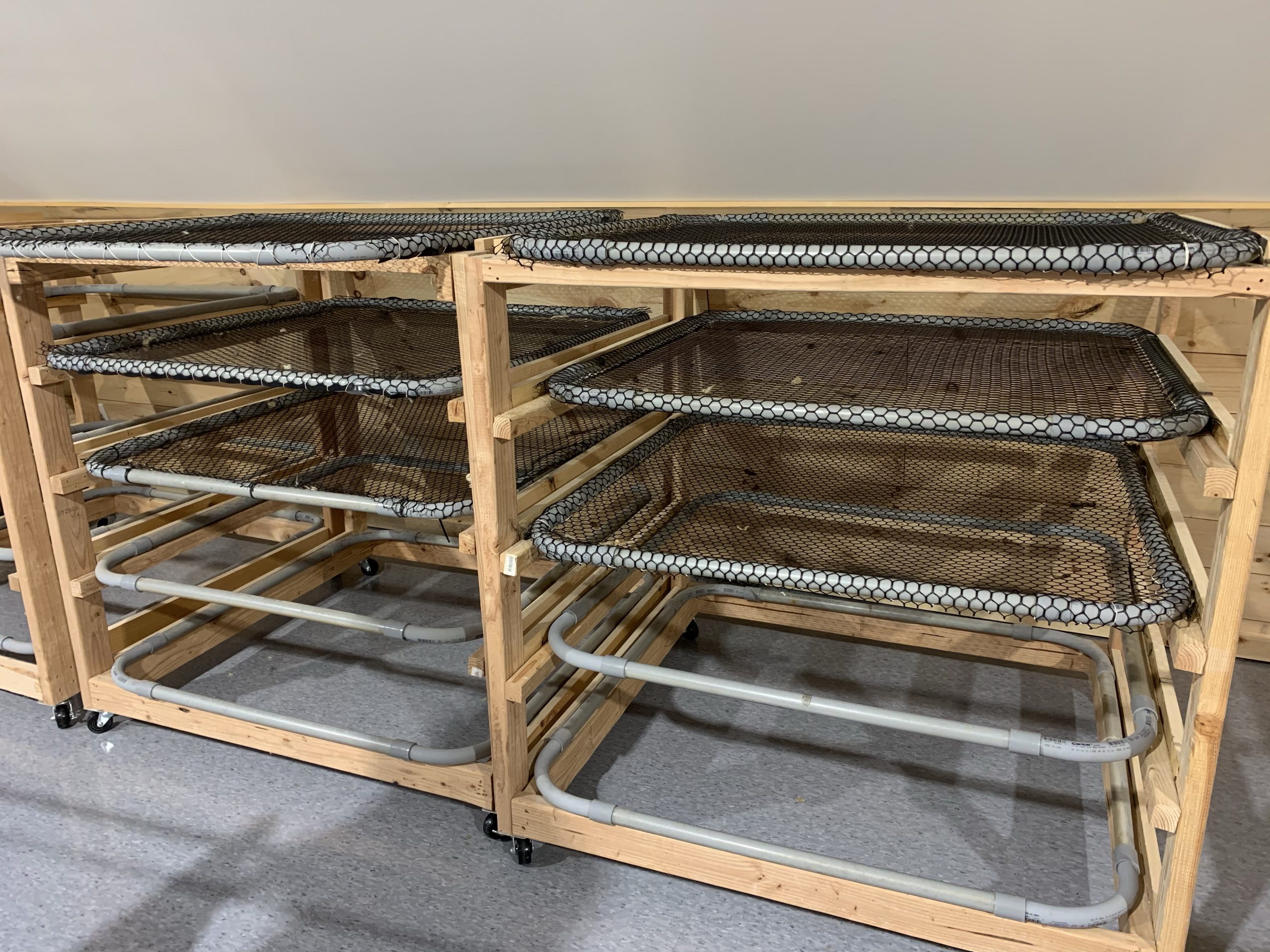
Dry fiber is passed through the separator to remove guard hairs and vegetable matter.
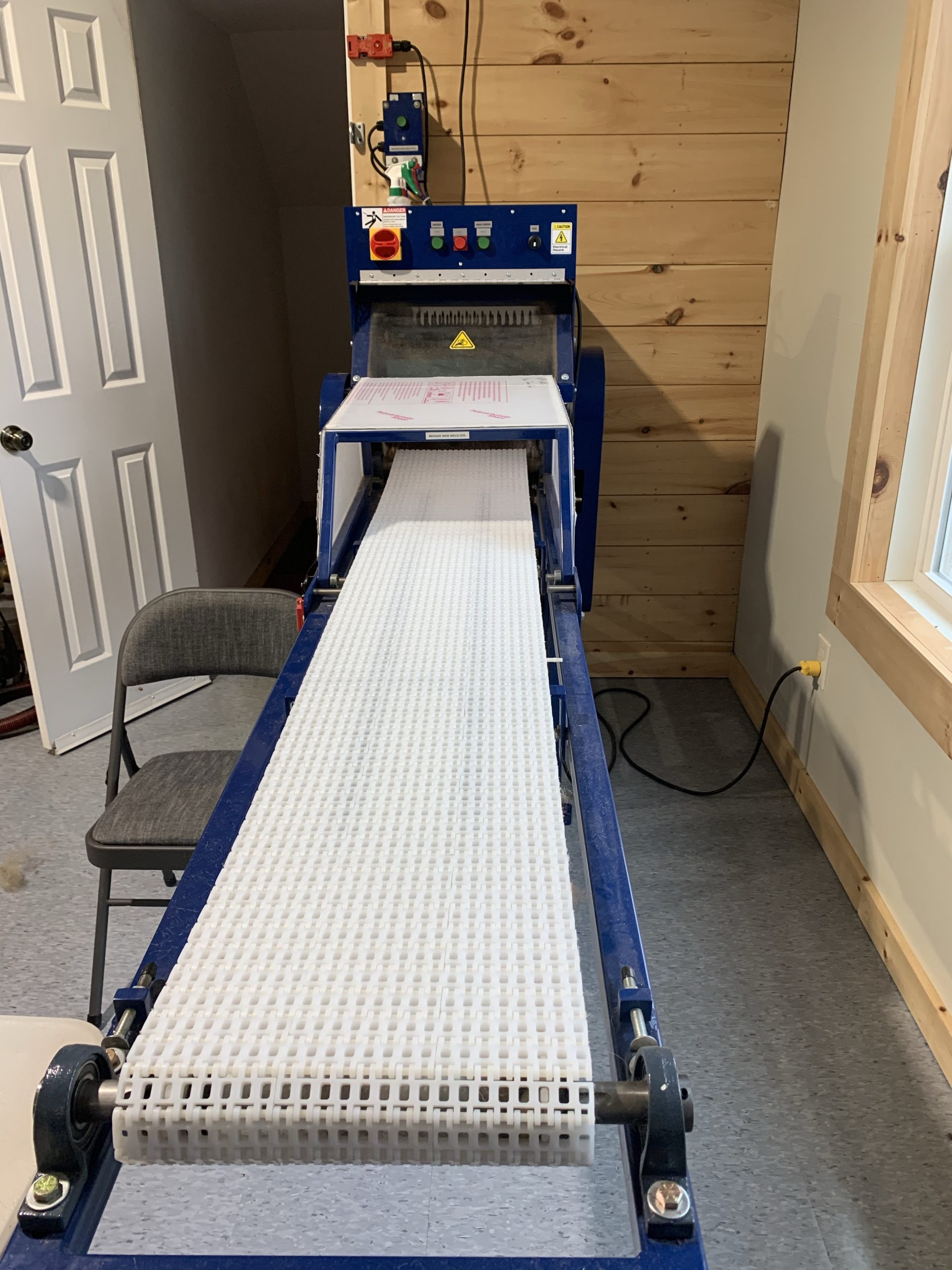
The carding machine was my favorite part of the mill. It’s really impressive to see how many gears and parts are at work inside these machines. At the carding stage, Clare combines fibers to make blends per the customer’s request. I asked for some wool to be added to my mohair to increase its memory. Fiber comes off the carder as roving or batts and is ready to be spun.

Clare’s is a 12 spindle spinning machine which means she can spin 12 yarns at the same time. She is able to spin a small sample and then stop the machine to assess the yarn. She may make adjustments to weight and twist before spinning the entire batch.

The next machine is for plying. Clare can spin yarns with up to four plies.
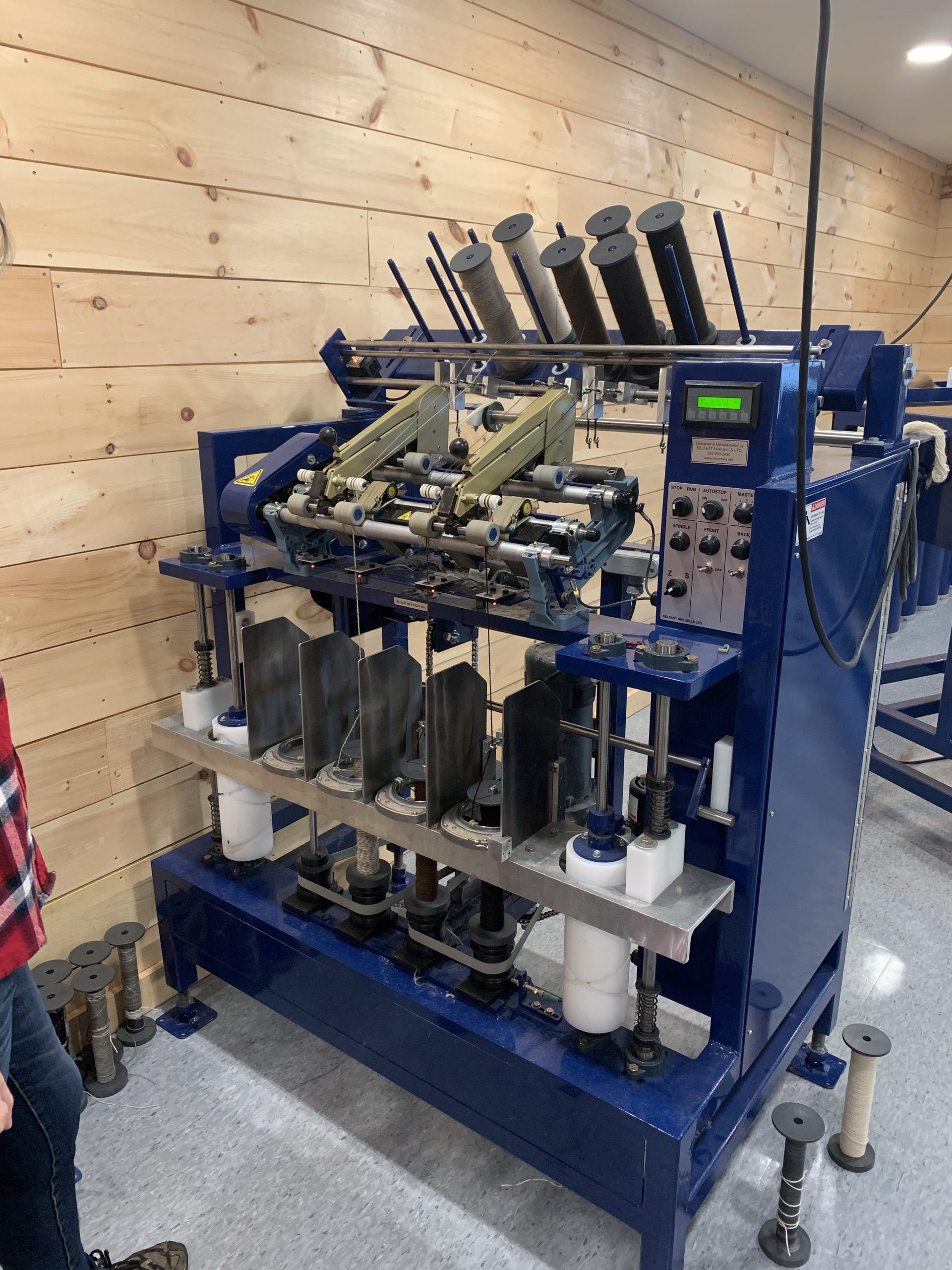
Yarns are then wound onto cones and steamed to set the twist.
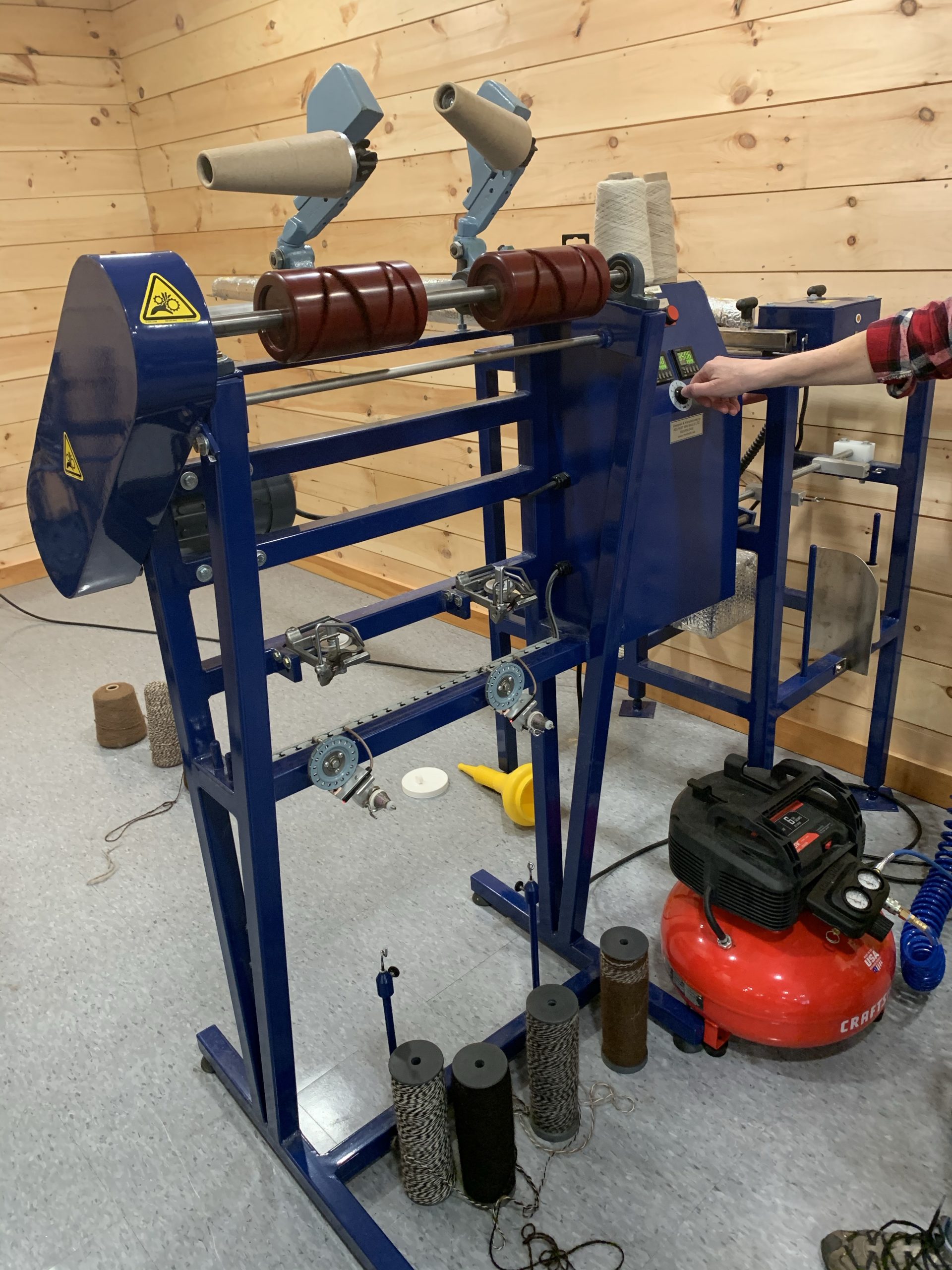
While the skein winder represents the final stage of processing in most mills, Clare goes the extra mile and puts all the yarn back through the washing machine to remove any oils that were picked up through the milling process.

Clare is dedicated to spinning yarns that her customers love. As a shepherd herself, she understands the time and commitment involved in growing healthy, soft fleeces. She feels honored when fiber farmers trust her to process their wool.
After the mill tour, Clare and I walked a rambling path through her property so that I could meet her sheep. In Clare’s flock of ten, she has both white and natural colored Wensleydales whose fiber she spins in her mill to sell locally.
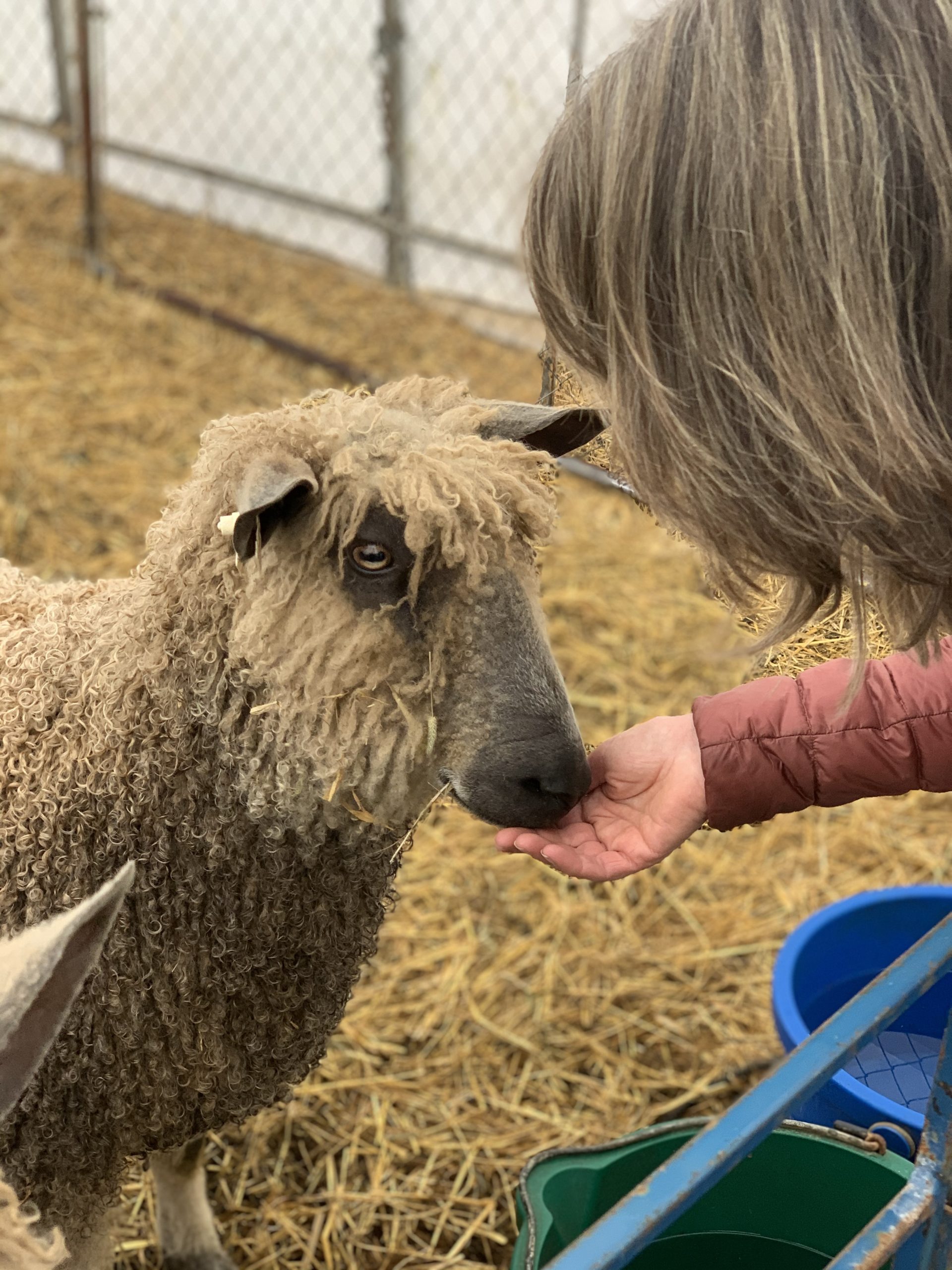
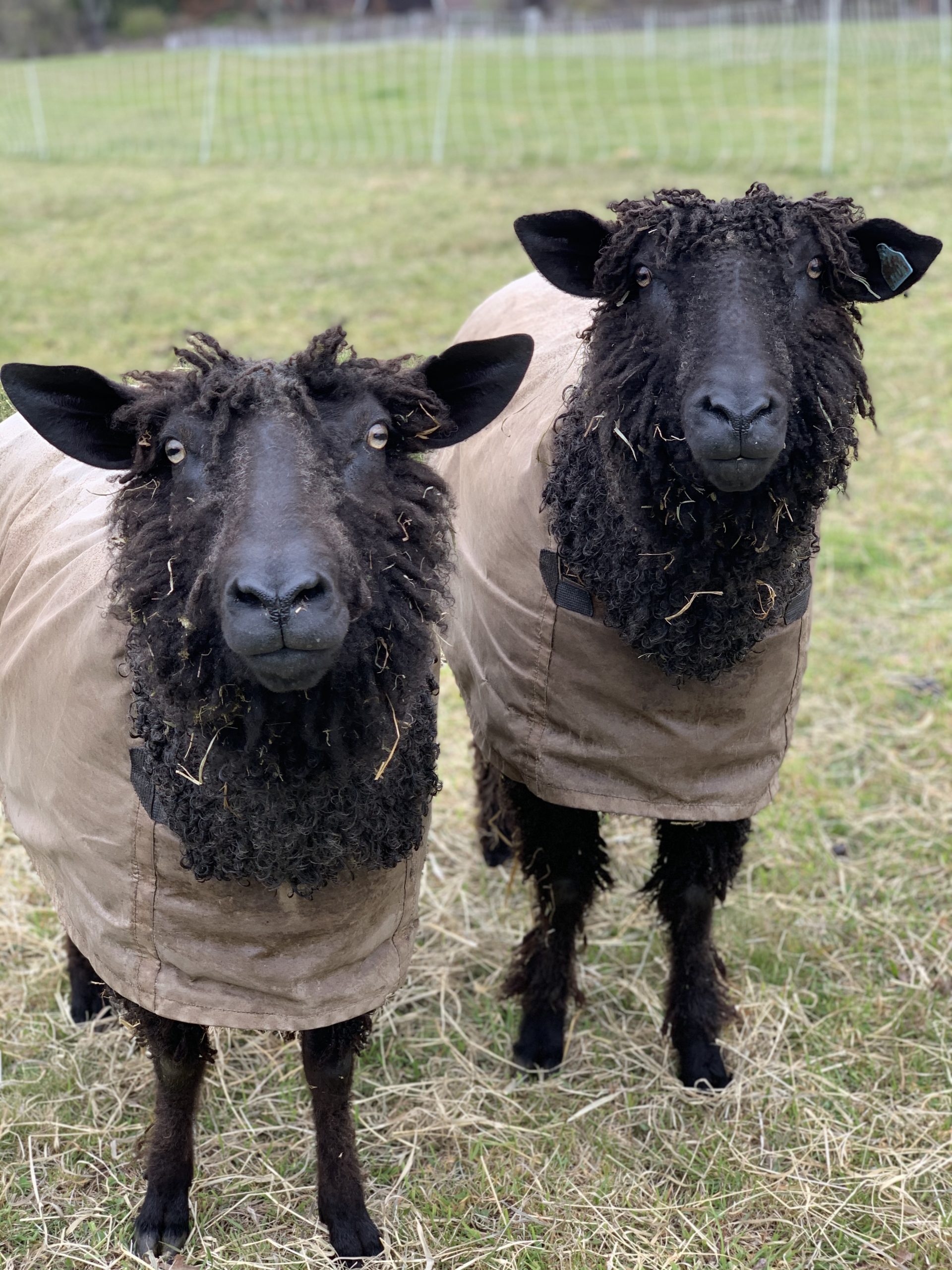
I could have spent the entire day wandering around Windover Farm with Clare and talking about wool, but she had already been extremely generous with her time. I got back in my truck to head east across the state. My heart was more full than it had been in weeks. My visit with Clare was the quarantine antidote that I desperately needed and the first of many adventures I was now excited for in my “year off”.
If you’d like to learn more about the mill at Windover Farm, visit https://www.windoverfarmandmill.com/ or find them on Facebook.
